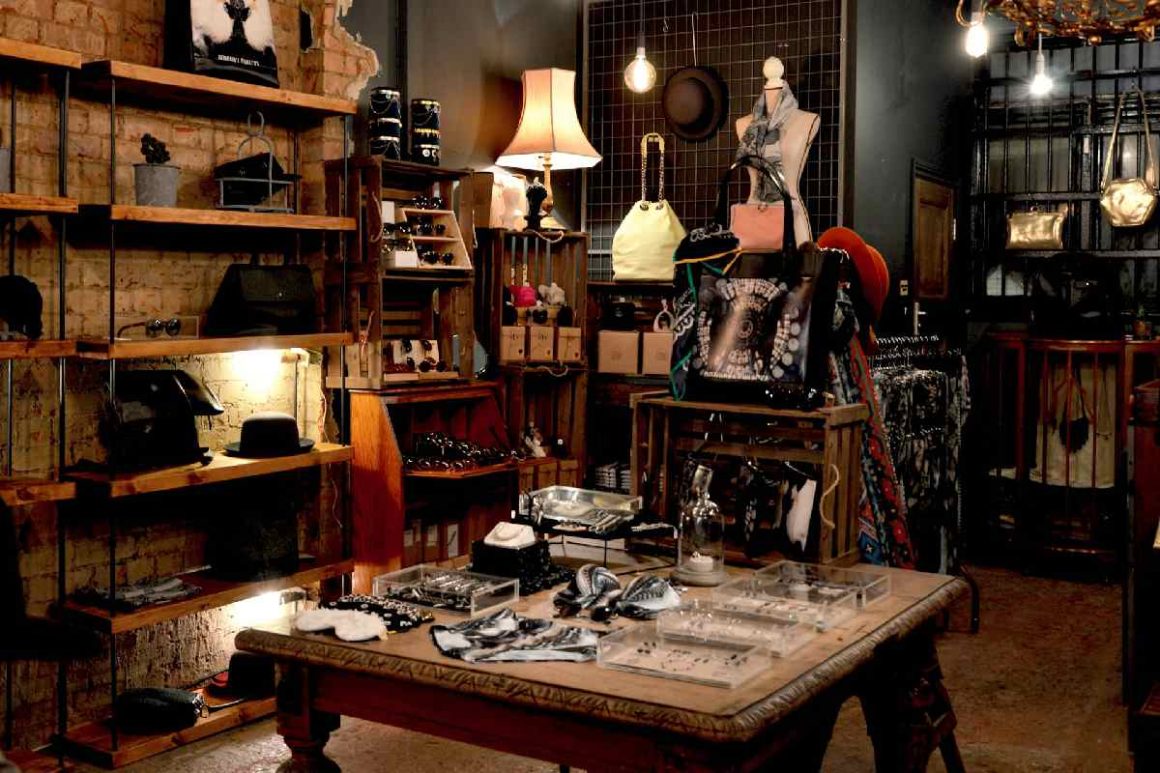Imagine a scenario where the elegance of your grandmother’s silk scarf or the robust charm of your father’s leather watch isn’t confined to the past, but is a coveted piece in your own fashion collection. This isn’t a distant reality in the realm of luxury fashion, where certain items hold an appeal that effortlessly transcends generations. The allure of luxury fashion serves as a universal language, speaking volumes of quality, heritage, and a sense of belonging that resonates across age groups. It’s a fascinating journey to explore how luxury brands have mastered the art of appealing to both the young and the old, creating emotional and cultural connections that last a lifetime.
Table of Contents
Timeless Design in Luxury Fashion
Timeless design in luxury fashion goes beyond mere aesthetics. It’s about crafting pieces that carry an essence of eternity, defying the fast-paced trends that dominate the fashion world. Consider the classic silhouettes of a Chanel suit or the iconic materials used in Hermès bags. These elements are not mere design choices; they are statements of enduring appeal and craftsmanship. They significantly contribute to a brand’s legacy, becoming symbols of sophistication and style that resonate with consumers across different age groups.
The magic of timeless design lies in its ability to evoke a sense of nostalgia while remaining relevant in the contemporary fashion landscape. It’s a delicate balance between tradition and innovation, where brands continuously refine their designs to keep them fresh yet familiar. This approach not only preserves the brand’s heritage but also ensures its relevance for future generations, creating a loyal customer base that spans decades.
Mastering the Art of Timeless Appeal
Rolex stands as a paragon of timeless design and enduring value, cultivating broad demographic appeal. Its watches are coveted by both the young entrepreneur and the seasoned collector. Rolex’s strategy hinges on a blend of tradition and innovation, ensuring that each timepiece is a testament to the brand’s commitment to excellence.
Consumer perceptions of Rolex are deeply rooted in the brand’s history of precision and durability, qualities that appeal to a wide range of ages. Testimonials from Rolex owners often highlight the emotional connection they feel with their watches, viewing them as heirlooms to be passed down through generations. This emotional bond is a powerful tool in Rolex’s marketing arsenal, reinforcing the brand’s status as a symbol of achievement and continuity.
Innovative Marketing Across Ages
Luxury brands face the challenge of engaging with a diverse audience, where traditional marketing channels might appeal to older consumers, and digital platforms resonate more with the younger demographic. Emily Essner, Saks Chief Marketing Officer, emphasises the importance of connecting with luxury consumers across generations, stating, “We are dedicated to serving the entire range of luxury customers, with a particular focus on those who are the most loyal to Saks, as the largest luxury ecommerce platform in the United States.” This quote underscores the necessity for luxury brands to craft campaigns that speak to universal values such as quality, heritage, and exclusivity, capturing the attention of both older and younger consumers.
Case studies of successful marketing campaigns reveal a common thread: the power of storytelling. Whether it’s through a meticulously crafted Instagram post or a high-production TV commercial, stories that highlight a brand’s history, craftsmanship, and the emotional value of owning a luxury item have a broad appeal. These narratives create a connection that goes beyond the product itself, inviting consumers of all ages to be part of a larger story.

Crafting Timeless Jewellery for All
Tiffany & Co. has long been synonymous with timeless elegance and sophistication, appealing to a wide range of consumers from different generations. The brand’s success lies in its ability to balance classic appeal with modern sensibilities, ensuring that its jewellery remains relevant and desirable to both traditional and younger consumers. Through innovative designs and marketing strategies, Tiffany & Co. has managed to maintain its status as a purveyor of fine jewellery that transcends age barriers.
One of the key strategies employed by Tiffany & Co. is the emphasis on storytelling in its marketing efforts. By sharing the rich history behind its collections and the craftsmanship that goes into each piece, the brand creates an emotional connection with its audience. This approach not only highlights the quality and heritage of Tiffany & Co.’s jewellery but also engages consumers on a deeper level, making them feel part of a timeless tradition.
Bridging Generational Gaps
In today’s digital age, luxury brands face the challenge of appealing to consumers across different generations, each with varying levels of digital literacy and scepticism. Older consumers may prefer traditional shopping experiences and may be less inclined to engage with brands online, while younger consumers are more digitally savvy and demand authentic, engaging content. To bridge this digital divide, luxury brands must create inclusive digital experiences that resonate with all age groups.
One effective strategy is to offer a seamless online shopping experience that mirrors the personalised service and exclusivity of in-store shopping. By incorporating advanced technologies such as virtual try-ons, personalised recommendations, and live chat support, luxury brands can cater to the preferences of both older and younger consumers. Additionally, creating content that educates consumers about the brand’s heritage, craftsmanship, and sustainability practices can appeal to a broad audience, fostering a deeper connection with the brand.
A Model of Intergenerational Luxury
In the landscape of luxury fashion, Cosette emerges as a brand that has successfully curated luxury that appeals across generations. By making luxury more affordable and accessible, Cosette has opened the doors for a wider demographic to experience the allure of high-end fashion. The brand’s strategy of offering discounted luxury handbags from leading brands, including the coveted YSL crossbody bag and the elegant Bottega Veneta bag, without compromising the prestige of these brands, has resonated with consumers of all ages.
Cosette’s success can be attributed to its unique approach to sourcing and marketing. By efficiently utilising overstock from luxury brands, Cosette provides customers with an opportunity to own coveted items at a fraction of the cost. This model not only appeals to younger consumers looking for affordable luxury but also to older generations who appreciate the value and quality of high-end brands. Furthermore, Cosette’s commitment to authenticity and quality, backed by its partnerships with trusted suppliers, ensures that consumers can shop with confidence.
A Common Ground for All Generations
In recent years, sustainability has emerged as a key factor influencing purchasing decisions across different age groups. Luxury fashion brands that prioritise sustainable practices are finding common ground with consumers who are increasingly concerned about the environmental impact of their purchases. By promoting mindful consumption and reducing the environmental footprint of luxury goods, brands can appeal to a broad demographic that values sustainability alongside quality and craftsmanship.
Cosette, for example, has taken a proactive approach to sustainability by selling excess inventory from luxury brands. This model not only makes luxury more accessible but also addresses the issue of overproduction and excess stock disposal in the fashion industry. By offering new and never-used products at competitive prices, Cosette encourages consumers to choose sustainable options without compromising on luxury. This commitment to conscious curation resonates with consumers of all ages, who are looking for ways to indulge in luxury fashion responsibly.
The Evolution of Intergenerational Luxury
As we look to the future, it’s clear that the landscape of luxury fashion will continue to evolve, driven by changing consumer preferences, technological advancements, and a growing emphasis on sustainability. Brands that are able to innovate in design, marketing, and sustainability practices will be well-positioned to appeal to consumers across generations. Emerging designers and brands that prioritise inclusivity, authenticity, and environmental responsibility are already making an impact, signalling a shift towards a more diverse and conscious luxury market.
The integration of technology into the luxury shopping experience is set to play a significant role in the evolution of intergenerational luxury. From augmented reality fitting rooms to blockchain-based authentication of luxury goods, technological innovations will offer new ways for consumers to engage with luxury brands. These advancements will not only enhance the shopping experience but also build trust and transparency, appealing to both tech-savvy younger consumers and quality-conscious older generations.
Moreover, as the conversation around sustainability intensifies, luxury brands that are able to demonstrate a genuine commitment to environmental and social responsibility will gain a competitive edge. By adopting sustainable practices throughout the supply chain and actively contributing to positive change, luxury brands can create a legacy that resonates with consumers of all ages. The future of intergenerational luxury lies in the ability of brands to adapt to these changing dynamics, ensuring that luxury fashion remains a source of inspiration and connection for generations to come.
The Timeless Bond of Luxury
Throughout this exploration of how luxury fashion bridges age gaps, it’s evident that the appeal of luxury transcends generational boundaries. From the enduring designs of Rolex and Tiffany & Co. to the innovative approach of Cosette, luxury brands have found ways to connect with consumers across different age groups. By emphasising quality, heritage, and sustainability, these brands have created a bond that is both timeless and universal.
As we reflect on the role of luxury fashion in our lives, it’s worth considering how these intergenerational connections enrich our understanding and appreciation of luxury. Whether it’s a cherished family heirloom or a newly acquired piece from a sustainable brand, luxury items have the power to bring people together, creating shared experiences and memories that last a lifetime. In a world that’s constantly changing, the timeless bond of luxury remains a constant, reminding us of the enduring value of craftsmanship, tradition, and innovation.


